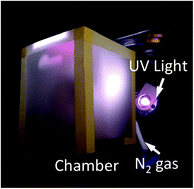Effects of oxygen on light activation in covalent adaptable network polymers
Abstract
Light activated polymers are a novel group of active materials that deform when irradiated with light at specific wavelengths. This paper focuses on the understanding and evaluation of light activated covalent adaptable networks formed by radical polymerization reactions, which have potential applications as novel actuators, surface patterning, and light-induced bending and folding. In these polymer networks, free radicals are generated upon light irradiation and lead to evolution of the polymer network structure through bond exchange reactions. It is well known that oxygen is an important inhibitor in radical-based chemistry as oxygen reacts with free radicals and renders them as inactive species towards further propagation and reaction. However, it is unclear how radical depletion by oxygen may affect the light-induced actuation. This paper studies the effects of oxygen on both stress relaxation and bending actuation. Light induced stress relaxation experiments are conducted in an environmental chamber where the concentration of oxygen is controlled by the nitrogen flow. A constitutive model that considers oxygen diffusion, radical termination due to oxygen, and the polymer network evolution is developed and used to study the stress relaxation and bending, and the model predictions agree well with experiments. Parametric studies are conducted to identify the situations where the effects of oxygen are negligible and other conditions where they must be considered.


 Please wait while we load your content...
Please wait while we load your content...